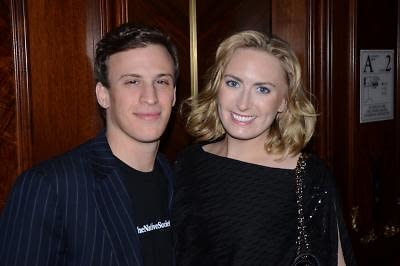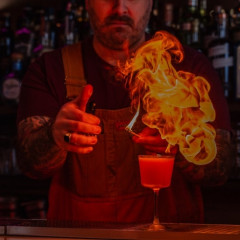We've taken great pleasure in discovering and exploring the Native Society, the social network of rich kids hailing from Manhattan. The Times finally found out about tNS as well, and the account is worth the read. But the reach of the article's goal may extend the writer's grasp...
When the writer tries to resolve the difference between old-time silver-spooners and today's social media, the result is mixed.
The lede sets up the dichotomy between socialites/barons of yore and today's gadget-attached set:
"Mrs. William Astor did not network. Cornelius Vanderbilt II never friended anyone on Facebook. Stuyvesant Fish never tweeted. Times, apparently, have changed."
 [tNS Winter Event At The Rose Club, via]
[tNS Winter Event At The Rose Club, via]
Such is the crux of the piece, as the article finds its narrative thread at the Native Society's Winter Event at the Plaza's Rose Club. The writer cartoonishly portrays these Natives in a few of our favorite descriptions:
On the scene: "Foppish scions in their 20s ascended the grand marble staircase, and sipped champagne in couture gowns, velvet dinner jackets and tuxedo slippers rakishly embroidered with Chinese characters. Those disinclined to formal wear still looked clubbable in Burberry check jackets, bow-ties and Hermes scarves."
On Oliver Estreich's suavness: "As guests mingled over champagne, the ash-haired Mr. Estreich, with his prominent jaw an above-it-all smile, worked the room with the practiced suaveness of a junior Sirio Maccioni, his boyish build (he could pass for 18) swimming a bit in his banker-ish gray pinstripe suit."
On Alexa Winner: "She looked ready to accept the 1957 Oscar for best actress, in a flowing gold Maggie Norris Couture gown and chinchilla stole."
On Freddie Fackelmayer: "A member who wears his hair in a dramatic swoop of forelocks--call it the Fop Flop--familiar from a thousand Ralph Lauren ads.
Two-dimensional as those descriptions may be, the reality is far from deniable.
Naturally, in keeping with the bromidic stereotyping and trying to bring this new media element in, the writer describes tNS as "LinkedIn for the Bridgehampton polo set."
 [Oliver Estreich]
[Oliver Estreich]
The writer latches on to protagonist Estreich, the club's founder, as the ring leader gives the usual spiel about the exclusivity of his secret coterie.
"You can't apply...It's the second-degree-of-association...If one of my administrators knows you, likes you, thinks you have the native sensibility, we'll reach out."
The piece claims Native Society "gatherings have already elicited eye-rolls" and quotes Guest of a Guest where we describe tNS as:
"a sort of Saint A's, the Princeton/Columbia faux-literary society that aspires to bolster social cachet through exlusivity but only serves as a safety net for the awkward in need of constant validation."
Then, of course, there's the big social media snub from Estreich about the origins of the club:
"It started out on Facebook, but as a clubhouse for elites, it was anything but exclusive. 'My dog is on Facebook,' Mr. Estreich said, with a contemptous snort.
The social media old world/new world yarn gets lost in the piece, unresolved and untangled. But the realization that the monied class of scions would actively have to work at networking (as Estreich asserts in the article) presents an interesting fear that the rich kids could loose their clout of relaxed affluence. And that would be a true social dilemma.



.jpg)
.jpg)



.jpg)
.jpg)
.jpg)



(6).jpg)
